Magnolia trees are gorgeous additions to any garden. Large flowers and glossy leaves make them stand out in any landscape. But Magnolias can be finicky trees to grow and care for. Many different types of Magnolia can be found in gardens. Every type has its own unique set of characteristics that make it special.
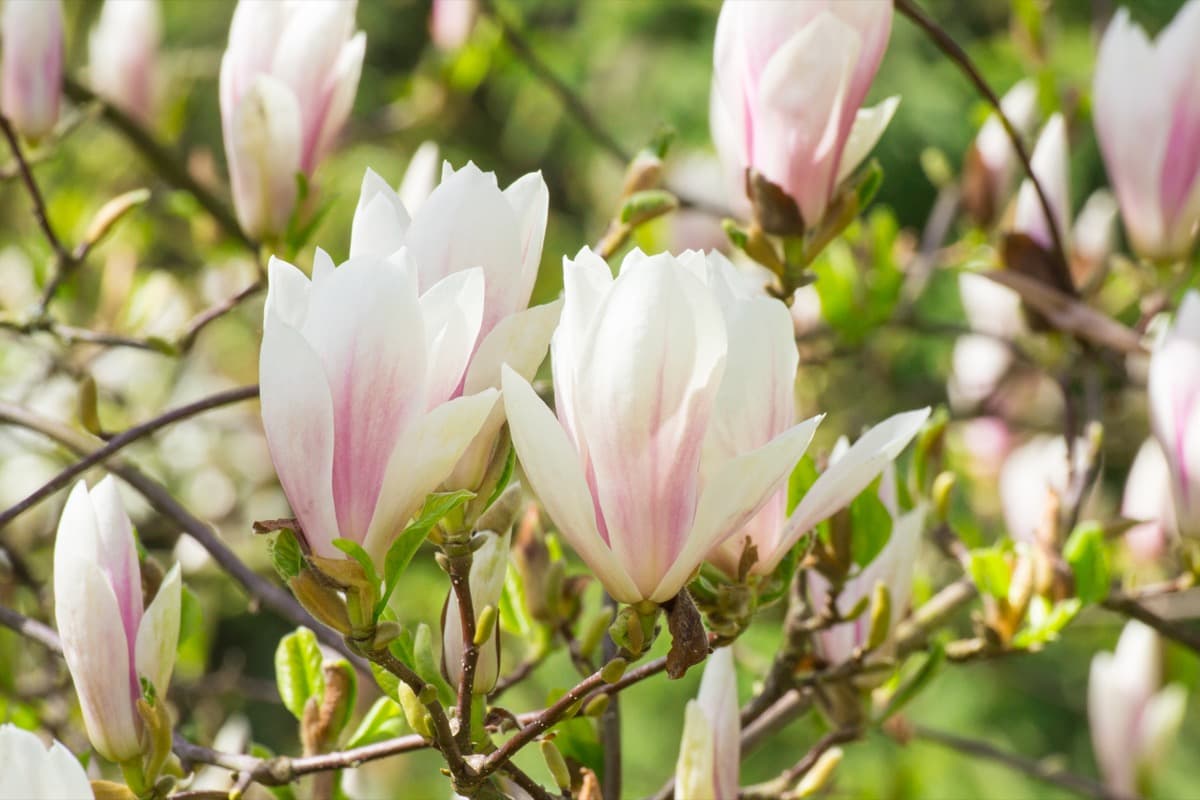
When choosing a Magnolia for your garden, consider the plant’s size, shape, and color. You will surely find the perfect one for your space. With the right planting, care, and maintenance, you should have no trouble growing a beautiful Magnolia tree in your yard.
How to Grow and Care for Magnolia in Your Garden
Types of Magnolia
Southern Magnolia – This large, evergreen tree is covered in glossy green leaves and beautiful white flowers that bloom from early spring to late summer. The Southern Magnolia is a popular choice for gardens, where it is often used as a specimen tree or planted in groups.
Star Magnolia – Star Magnolia is a small deciduous tree with a compact, rounded crown. It is covered in stunning white flowers before the leaves appear in early spring. Star Magnolia is a slow-growing tree, reaching around 2 meters after ten years.
In case you missed it: How to Grow and Care for Friendship Plants Indoors
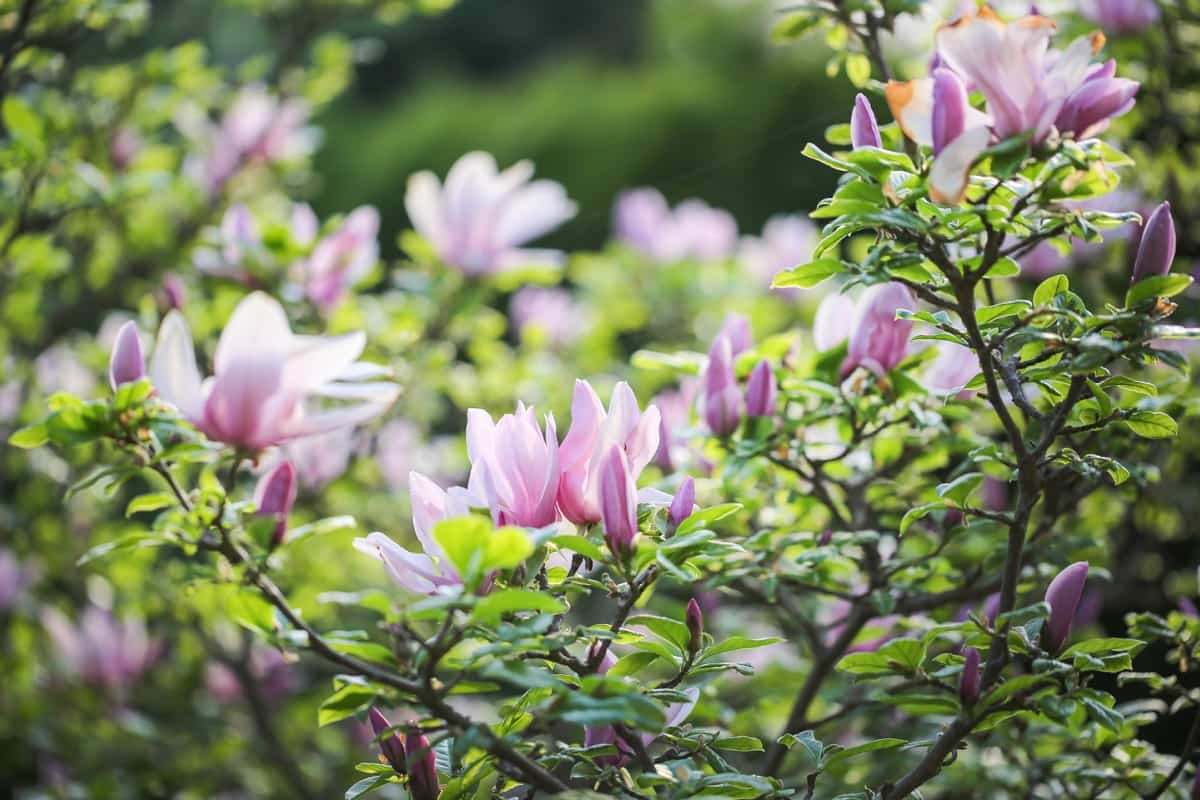
Saucer Magnolia – The Saucer Magnolia is a hybrid Magnolia noted for its large, goblet-shaped flowers. The leaves are 6-8 inches long and 3-4 inches wide. The flowers are white with purple streaks and are 3-4 inches across. The blooming period occurs in early spring before the leaves emerge.
Champaca Magnolia – The Champaca Magnolia is a beautiful tree that can add a touch of elegance to any garden. The blooms of the Champaca Magnolia have a very strong scent, which can be both pleasant and overpowering, depending on your preferences. This tree can grow quite large, so giving it plenty of space to spread out in the garden is important.
Sweetbay Magnolia – It is a small to medium-sized tree with a pyramid-shaped canopy and fragrant, white flowers that bloom in the spring. The Sweetbay Magnolia is an excellent choice for gardeners who want a beautiful, low-maintenance tree that will add interest and value to their landscape.
Cucumber Tree – The Cucumber tree is a large, deciduous tree. It has a thick, conical trunk and large, dark green leaves. It needs moist, well-drained soils and full sun to partial shade. It is tolerant of urban pollution and salt spray. The cucumber tree is an excellent choice for shade or street trees.
Kobus Magnolia – The Kobus Magnolia is a large shrub or small tree. The Kobus Magnolia has large, oval-shaped leaves that are green in summer and turns yellow in fall. The flowers are white and bloom in spring.
Climate Suitable for Growing Magnolia in the Garden
When choosing a spot for your Magnolia, ensure it has well-drained soil and is in full sun to partial shade. If you live in a hot climate, choose a shady spot to protect your tree from the harsh afternoon sun. Magnolias need room to grow, so give them plenty of space when planting.
Magnolias are slow growers, so be patient while waiting for your tree to mature. Water your Magnolia regularly, especially during dry spells. The garden’s best temperature for growing Magnolia is between 21 to 29°C. The Magnolia will not do well if the temperature gets too hot or cold. Also, make sure to keep the soil moist but not wet. Too much water can kill the plant.
In case you missed it: Best Bamboo Plants for Screening and Hedging
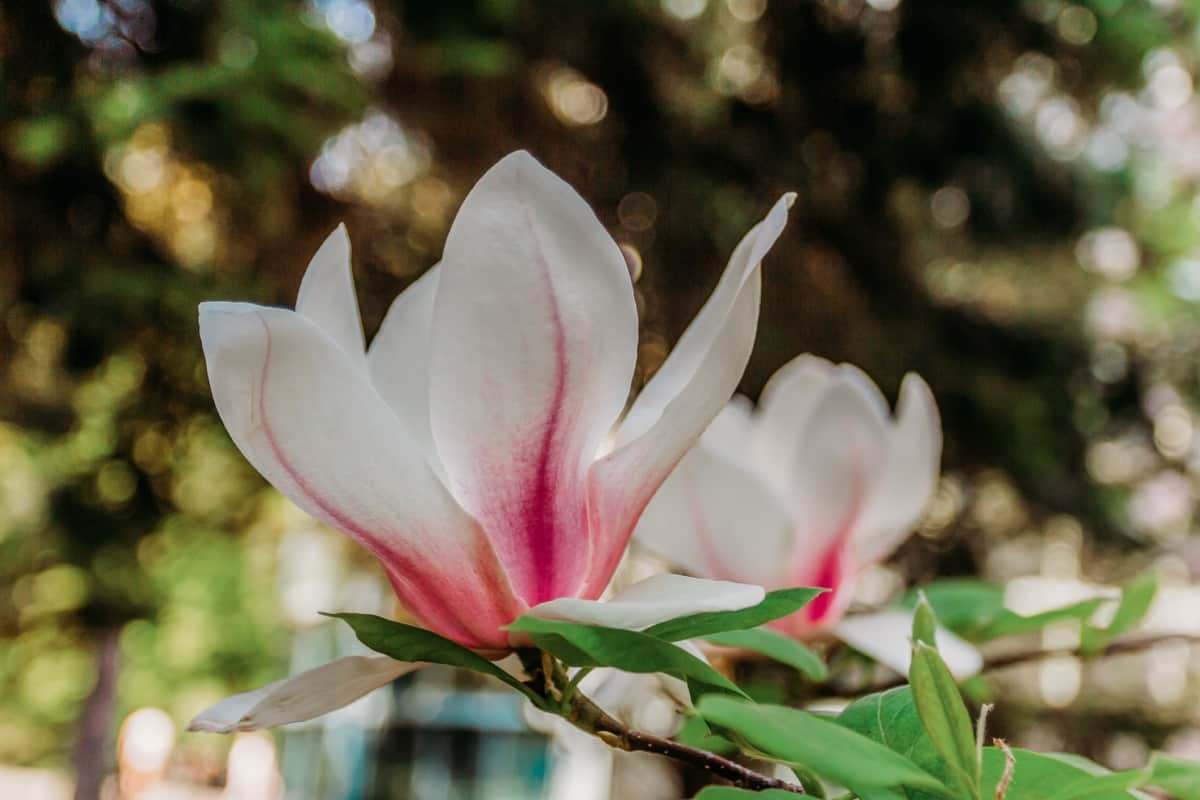
Soil Requirement for Growing Magnolia in the Garden
The soil should be acidic, humus-rich, and well-drained. A pH of 5.5 to 6.5 is ideal. If your garden soil is too alkaline, it can be amended with sulfur or peat moss. When planting, set the tree at the same depth it was growing in the nursery pot. After backfilling with soil, water the well to settle the roots and remove any air pockets. Water young trees weekly during dry weather for the first year or two; established trees need only supplemental watering during prolonged droughts.
Water Requirement for Growing Magnolia in the Garden
When watering your Magnolia, the general rule is to keep the soil moist. This is especially important when the tree is actively growing in the summer. Once established, Magnolia trees are relatively drought tolerant, so you can water less often.
However, during periods of extended drought, you may need to give your tree a deep watering to prevent stress and wilt. Magnolias are generally hardy trees that require little maintenance. However, they need a lot of water, especially when established. Once they are established, they are quite drought tolerant. If you live in low rainfall, you must water your Magnolia regularly to ensure it gets enough moisture.
Propagating Magnolia
From Cutting
Propagating Magnolia from cuttings is a great way to grow new plants without starting from seed. The process is relatively simple and only requires a few supplies. You only need a sharp knife, some rooting hormone, and some well-draining potting mix. Choose a healthy branch that is about 6-8 inches long to take your cutting. Cut the branch at a 45-degree angle just below a leaf node (the point where leaves are attached to the stem).
In case you missed it: How to Grow and Care for Campanula Bellflower in Your Garden
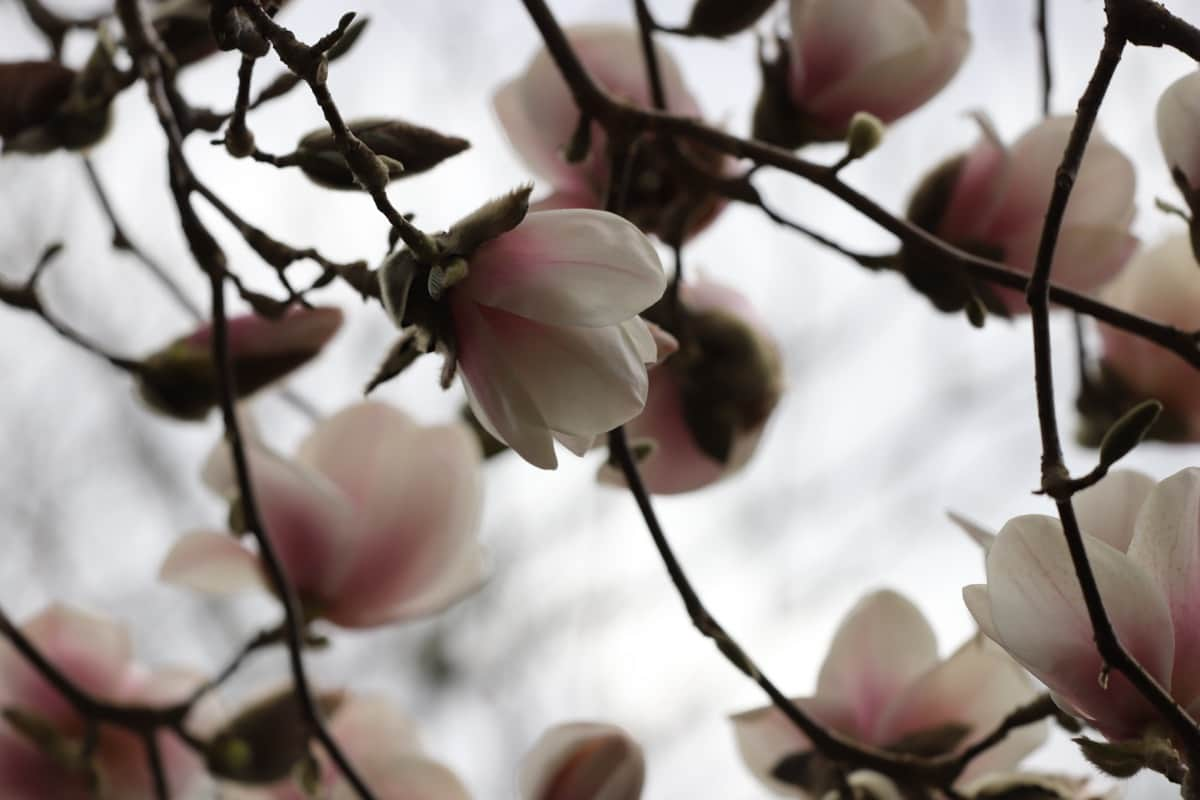
Dip the cut end of the branch in the rooting hormone. Next, plant the cutting in a pot filled with moist potting mix. Once your cutting has rooted (after 4-6 weeks), you can transplant it into its pot or the garden. Magnolia cuttings are best taken in spring or summer when the plant is actively growing.
From Seeds
Magnolia trees are grown from seed, which can be collected from the cones that form on the tree. The seeds need to be stratified, meaning they need a period of cold, moist conditions to germinate. To stratify the seeds, plant them in a pot with moistened potting mix and place them in the fridge for three months. Keep the potting mix moist during this time. After stratification, sow the seeds in pots filled with moistened potting mix. Keep the pots in a sunny location and moisten the soil. The seeds should germinate within two weeks.
Once the seedlings have grown their first true leaves, transplant them into individual pots filled with well-draining potting mix. Maintain the soil moisture levels and fertilize monthly with an all-purpose fertilizer. When the seedlings are large enough, transplant them into your garden bed. First, dig a hole twice as wide and deep as the current pot to transplant Magnolia seedlings. Gently loosen the roots around the edge of the pot, then place the seedling in the hole. Fill in with soil, tamping down lightly as you go. Water well.
Magnolia Plant Care
Fertilizer Requirement for Growing Magnolia in the Garden
A Magnolia is a beautiful flowering tree that can add elegance and charm to any garden. But like all plants, Magnolia needs the right care to thrive. One important aspect of caring for Magnolia is providing the right fertilizer. When it comes to fertilizer, Magnolia trees are not particularly picky. However, they do require a high nitrogen fertilizer to promote healthy growth. A general-purpose fertilizer applied once or twice a year should be sufficient. It is important to avoid over-fertilizing, as this can lead to problems such as leaf burn.
In case you missed it: Small Indoor Plants for Apartment Living
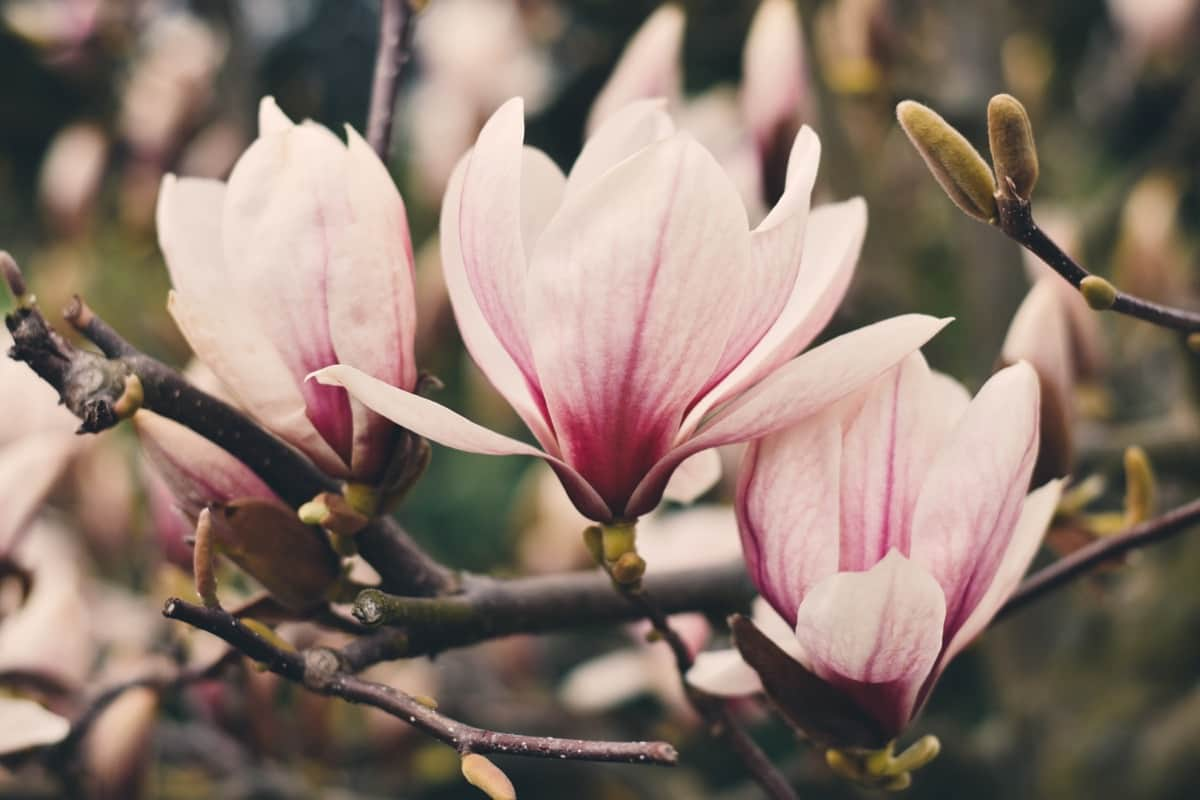
The best fertilizer for Magnolia is one that is high in phosphorus. This nutrient helps promote strong root growth and abundant flowering. Apply fertilizer to the soil around the base of the Magnolia tree once every two weeks during the growing season. Be sure to water deeply after each application so the roots can absorb the nutrients.
Pruning Magnolia Plant
To keep your Magnolia plant looking its best, you’ll need to prune it regularly. Pruning helps promote new growth and keeps the plant healthy. When pruning, be sure to remove any dead or diseased branches first. Then, you can shape the plant by trimming back any long or overgrown branches.
Finally, cut away any suckers growing from the plant’s base. Pruning is best done in late winter or early spring before new growth begins. However, you can prune your Magnolia at any time of year if necessary. Just be sure to avoid pruning during extremely cold weather, as this can damage the plant.
Magnolia Plant Care in Winter
When the weather gets colder, you may think you must stop watering your Magnolia plant. Your plant still needs water during the winter, especially if it is in a pot. If you live where the ground freezes, water your Magnolia before the ground does. If you have a young Magnolia tree, protecting it from the cold weather is important.
The perfect way to do this is to wrap the tree in burlap or fabric. This will help keep the tree warm and protect it from strong winds. Once your tree is established, it should withstand most winters without problems. However, if you live in harsh winters, you may want to consider planting your Magnolia in a pot to move it indoors during the worst weather.
Pests and Diseases of Magnolia and their Control
Pests of Magnolia can include aphids, scale, and mealybugs. Each of these pests can be controlled with different methods. Pests are a common problem when growing Magnolias in the garden. Some of the most common pests include aphids, scales, and mites. These pests can damage the leaves, flowers, and tree bark. You can do a few things to control these pests. One way to control aphids is to spray the leaves of your Magnolia tree with water regularly.
In case you missed it: How to Grow and Care for Black-eyed Susan in Your Garden: A Beginners Guide

This will help to remove any aphids that may be present on the leaves. You can also use an insecticidal soap or neem oil to kill any aphids that are present. Scale can be controlled by using an insecticide or horticultural oil. These products will kill any scale insects that are present on the tree. You can also prune away any affected branches to help control the scale spread. Mites can be controlled by using a miticide or insecticide. You can also increase the humidity around your Magnolia tree by misting it with water regularly.
While Magnolias are generally hardy and trouble-free, a few diseases can affect them. The most common is powdery mildew, a white powdery coating on the leaves and stems. It thrives in warm, humid conditions. Left untreated, it can cause the leaves to turn yellow and drop off. To prevent powdery mildew, water your Magnolia at the base of the plant rather than from above. This will help to keep the foliage dry. If you see signs of powdery mildew, treat it with a fungicide designed for ornamentals.
Other diseases affecting Magnolia include root rot, leaf spot, and anthracnose. These are all fungal diseases that can be controlled using fungicides. Root rot is the most serious of these diseases and can kill your Magnolia if left untreated. To prevent root rot, ensure your Magnolia is planted in well-draining soil and water it regularly (but not too much).
Conclusion
Growing and caring for a Magnolia in your garden can be quite rewarding, as these trees offer gorgeous blooms that add beauty to your landscape. With a little care, your Magnolia tree will thrive and provide beautiful flowers for many years.
- Gardening Techniques in Planting Vegetables
- Where to Place Indoor Plants in Your Home
- How to Grow Tomatoes Organically at Home: A Comprehensive Guide
- Organic Gardening on a Budget: Low-Cost Methods and Materials
- Gongura Seed Germination and Planting Methods
- Cabbage Seed Germination and Selection
- Broccoli Seed Germination and Selection
- Asparagus Seed Germination and Variety Selection
- Seasonal Flower Gardening: Best Practices for Spring, Summer, Fall, and Winter
- How to Grow Hibiscus from Flower
- Plantation Ideas for Home Decoration: A Beginners Guide
- Flower Garden Designs and Layouts for Beginners
- Planting and Spacing Techniques in Papaya: A Beginner’s Guide
- Growing Gold: Essential Techniques for Planting Pineapples
- How to Make Kalanchoe Plant Bushy: Home Remedies and Solutions
- 11 Reasons Why Your Gardenia is Not Blooming: Home Remedies and Solutions
- Eco Elegance: The Guide to Designing a Drought-Tolerant Landscape
- Gardening on a Slope: Strategies for Hillside Landscaping
- Nourish and Flourish: Top Organic Mulches for Thriving House Plants
- Everything You Want to Know about Indian Mogra Flower: Discover Uses and Growing
- Green Thumb Success: Expert Tips for Cultivating Greenhouse Pumpkins All Year Round
- Maximize Growth & Flavor: The Ultimate Guide to Companion Planting in Herb Gardens
- How to Control Rhododendron Problems Naturally: Home Remedies and Organic Ways to Fix Them
- Natural Magic: The Remarkable Benefits of Cinnamon for Plants
- Best Steps to Revive Dying Tulip with Natural and Organic Treatment
- 10 Reasons Why Your Angel Trumpet is Not Blooming: Remedies and Treatment
- How to Fix Periwinkle Leaf and Flower-Related Problems: Natural Remedies and Solutions
- How to Fix Zinnias Leaf and Flower Problems: Discover Natural and Home Remedies
- Organic Steps to Induce Lemon Tree Flowers: A Comprehensive Guide
- Bloom Booster: Crafting the Perfect Homemade Bougainvillea Fertilizer
- Optimizing Growth: A Guide to Applying NPK Fertilizer for Potted Plants
- 10 Best Homemade Fertilizers for Rubber Plant: DIY Recipes and Application Method
- How to Boost Female Pumpkin Flowers: Effective Steps for More Flowers and High Yields
- Transform Your Indoor Garden: Top Benefits of Pink Salt for Houseplants
- 10 Best Homemade Fertilizers for Peacock Plants (Calathea): Easy DIY Guide
- Unlock Blooms: 9 Reasons Why Your Potted Chrysanthemum is Not Blooming